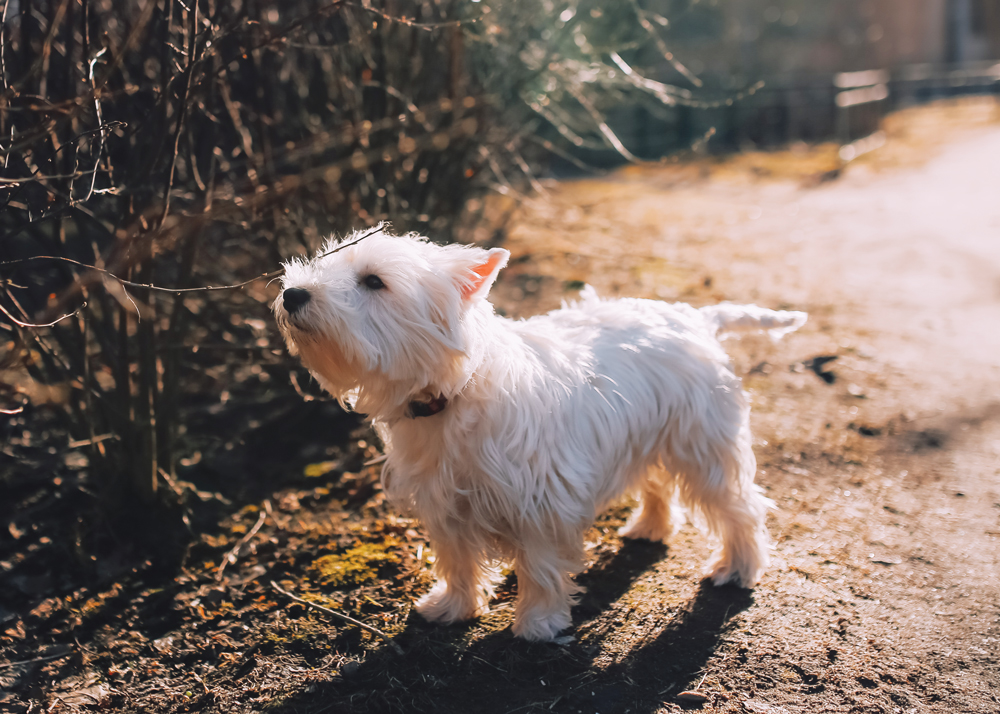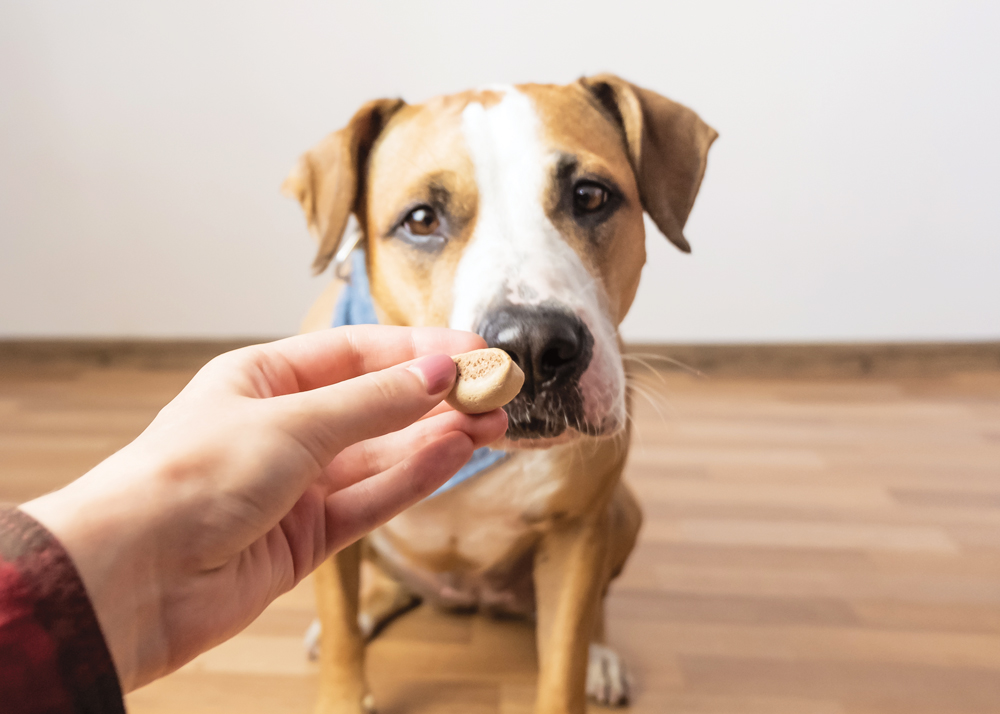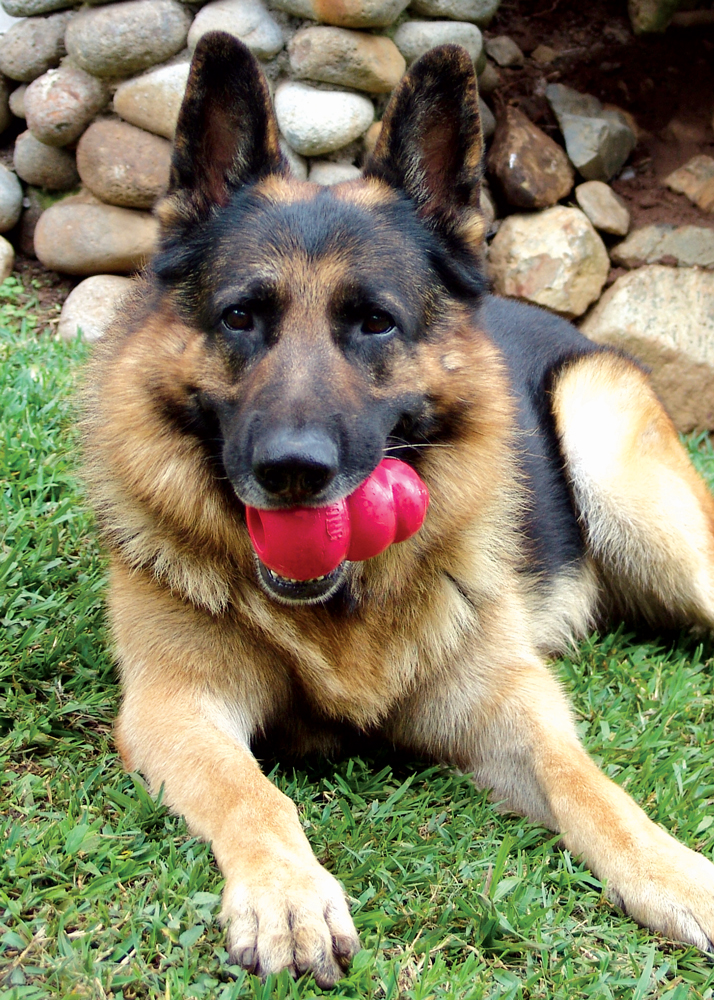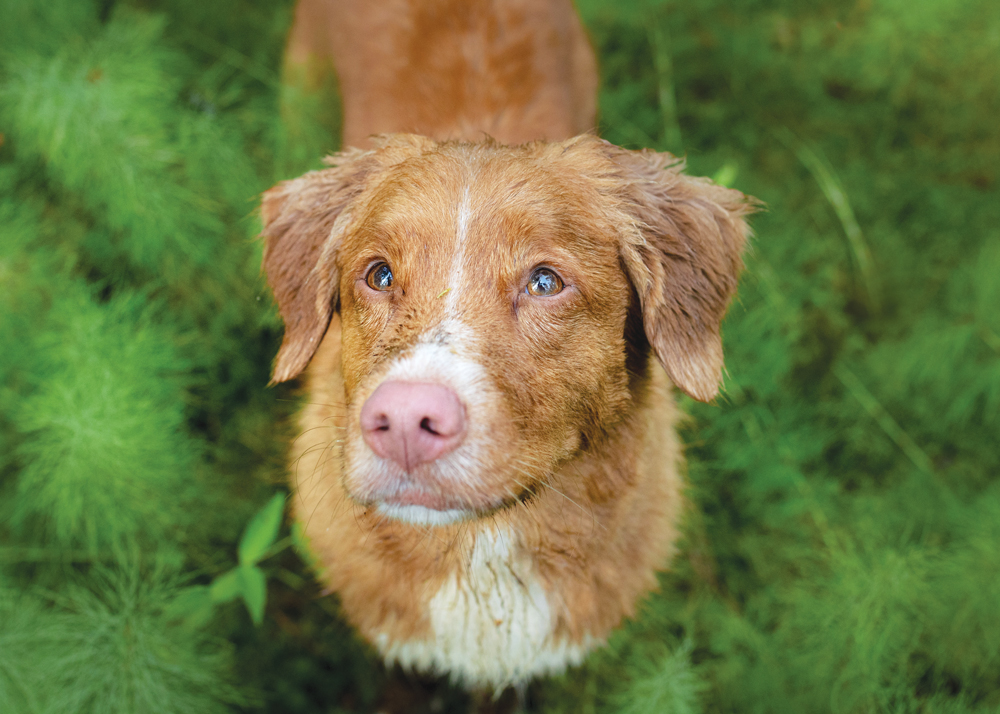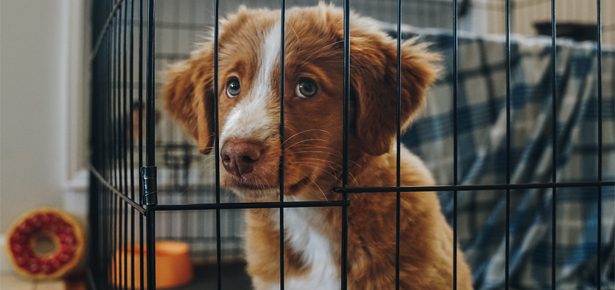

Canine Faux Pas: The Top 5 Things Dog-People Do Wrong
Are you unwittingly making these mistakes?
Are you guilty of making these mistakes with your dog? We asked Mikkel Becker, a certified trainer and behaviour consultant and head trainer for Fear Free Pets (fearfreepets.com and fearfreehappyhomes.com) for the top five mistakes she sees dog-people make. She happily shared her nix list. Mikkel uses positive reinforcement and non-force based training strategies rooted in scientific learning theory to help pets and their people live better lives together through kind training and bond building.
The Top 5 Dog Don’ts—and What To Do Instead.
1. Consider ‘backyard time’ as exercise. “Just because a dog has access to the backyard doesn’t mean that you can ditch walks altogether. Dogs have an innate need to explore and search.”
Photo: kondrukhov/bigstock.com
2. Become so focused on the end goal that you don’t stop to let your dog smell the roses (or fire hydrant, or bush or…). “Dogs aren’t about the distance, they’re all about the experience. For a dog, it’s important to remember that they experience their world primarily through their nose.
When they’re in that type of mode, reading messages left behind by other dogs or following the trail of critters who have scampered through the grass just prior, it’s engaging for their brain, lighting up pleasure centers as well as causing the brain to problem solve and engage in following scent trails of others who have been there before. While dogs are present and always in the moment, it’s important for us to realize that they ‘see’ far beyond us. After all, they’re not only experiencing what they can see in that moment, but they actually may be perceiving a much more complex world than us—a nuanced, woven pattern of the scents of animals, people, and other things beneath the surface (in some cases quite literally, like a denned-in critter your dog may be digging to unearth). In some ways, dogs can experience the past, the present, and the future all at once thanks to their amazing ability to smell who has been there before, who is there now, and even catch scents on the wind of what might be coming next.”
“Dogs aren’t about the distance, they’re all about the experience.”
3. Go to the dog park. “Too many people think of the dog park as a must-do for all dogs. The truth is, not all dogs enjoy the company of other dogs. And, just like people, dogs can be selective of the canine companions they’re likely to view as friends. Forcing a dog into a dog park or attempting to ‘socialize’ a dog that’s displaying aggressive behaviour by visiting the dog park may exacerbate the problem.
Instead, think of the dog park as a bar. The bar scene simply isn’t the right scene for all people, nor is the dog park the right scene for all dogs. Also, a dog’s comfort level with the place can change over time, just as a person may mature and decide the bar scene is no longer their scene.
For some dogs, the dog park is a great opportunity to socialize and play with other friendly dogs. If this is your dog, by all means visit the dog park—just remember that other dogs that are taken to the dog park may lack social skills.
………………………………………………………………………………………………………………
Dog Park Risk Reduction
It’s important to watch the behaviour of other dogs. Ideally scan the area before taking your dog in, and err on the side of caution, leaving early and removing your dog if any ‘iffy’ players enter the park. This will minimize the risk of negative exposure to other dogs that may be uncomfortable and acting defensively.
………………………………………………………………………………………………………………
Photo:photoboyko/bigstock.com
4. Feed out of food bowls. “Don’t feed your dog out of food bowls. (Even worse, don’t free feed your dog. The latter is especially bad for a dog’s waistline, because it minimizes the ability to monitor portion size or note changes in the dog’s eating that could indicate underlying sickness.) Feeding your dog his meals from a bowl is a huge missed opportunity. Dogs really benefit from activities that engage both body and mind—exactly what’s possible by feeding through food puzzles. Rotating food puzzles is especially beneficial for keeping the mind challenged through ongoing variety.
“Feeding your dog his meals from a bowl is a huge missed opportunity.”
Offering food puzzles can turn 60 seconds of gulping food into 60 minutes of rewarding activity. Doing so also keeps the dog engaged in acceptable activity and leaves the dog more satisfied. It reduced the likelihood of the dog acting out in other ways (like chewing books or the couch) by keeping their mind, teeth, and body occupied in productive activity their human accepts as they work to earn their meal.” Win-win!
Photo:photopix/bigstock.com
………………………………………………………………………………………………………………
Giving your dog the opportunity to remain engaged in that scent-laden bush the neighbourhood dogs have peed on is an important way to give your dog the chance to investigate. It’s their version of checking their ‘pee-mail.’ As silly as it sounds, dogs get to know other dogs and what they’re about through such smell investigation. And it’s important to remember that health is a combination of mental, physical, and emotional wellbeing. Allowing your dog to simply ‘be a dog’ and to take the time to smell the roses, bushes, grass patches, and sides of buildings and tires are all ways to offer the mental freedom to be a dog, working both body and mind at the same time
………………………………………………………………………………………………………………
Photo: Anna-av/bigstock.com
5. Punish your dog for acting unruly. “Punishment—including scolding, yelling, swatting, jerking, and using other scary sounds, body posturing, or physical manipulations to intimidate or physically force the dog to stop doing an unwanted behaviour—are all tactics that are far more likely to cause harm than good. Punishment may seem to work in the moment if the dog ceases the unwanted behaviour—perhaps a dog stops barking at a passing dog when his leash is jerked—but it’s hugely problematic. The underlying emotion causing the behaviour (in this case, probably fear or anxiety about the incoming dog) isn’t resolved and can actually be worsened by punishment-based tactics that increase anxiety, fear, frustration, and stress. Ultimately, punishment is likely to cause a dog to become reactive. Not only is the dog more likely to be on edge with punishment based tactics, but it can damage the bond of trust between person and dog. It can also create other unintended negative associations, such as increasing the dog’s anxiety about other dogs or even result in a generalized increase in angst about incoming people. Furthermore, punishment may actually inhibit important warning signs, like the bark, growl or lunge that signal a dog is feeling uncomfortable. When forced into silence, tension can build up and, without accepted ways to signal their discomfort or distress, escalate into a “sudden” bite.”
Join the newsletter and never miss out on dog content again!
"*" indicates required fields
By clicking the arrow, you agree to our web Terms of Use and Privacy & Cookie Policy. Easy unsubscribe links are provided in every email.
